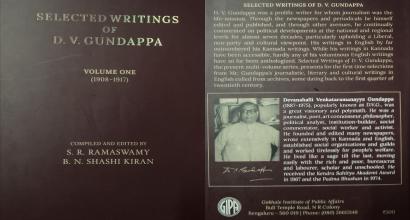Ayurveda, being a medical science, does not consider cosmology as one of its central preoccupations. Vagbhata’s Ashtanga-Hrdayam, which contains the definitive summary of classical Ayurveda, makes not even a passing reference to cosmological theories.
Elaborate references to these theories, based mostly upon the Sankhya system, may however be found in the texts of Charaka and Sushruta. These theories owe their presence in these texts to two major reasons:
1. Historical Reason: The Samhitas of Charaka and Sushruta developed in an intellectual milieu that was heavily loaded with philosophical ideas and speculations. Charaka, in his endeavour of rationalising therapeutics, relied heavily upon philosophical systems, especially the Sankhya and the Nyaya-Vaisheshika. Many of the central doctrines of Ayurveda – the doctrine of doshas, the theory of Pancha-Mahabhuta etc. – are derivatives of ideas found in these two philosophical systems. An intellectual proximity was thus generated; and this proximity is one factor that led to the consideration of cosmology in Ayurvedic texts.
2. Philosophical Reason: Ayurveda, renowned for its comprehensive world-view, considers Swasthya [health] in its ultimate sense, to mean Moksha [emancipation]. In fact, good mental health is directly linked with Self- knowledge. Says Caraka:
मानसो ज्ञानविज्ञानधैर्यस्मृतिसमाधिभि:। (च.सू.१)
ज्ञानम् अध्यात्मज्ञानं, समाधि: आत्मनि मनसो नियमनम्। (चक्र:)
Knowledge of the self, the Adhyatma-Jnana, therefore came within the purview of Ayurveda. Because of the close association of Self-knowledge with cosmology in the Sankhya system, a cursory treatment of the latter became essential in Ayurvedic texts.
Summarily, cosmology is merely a topic of peripheral consideration in Ayurveda and almost all of it is based upon the Sankhya system.
According to Sushruta’s exposition of the Sankhya cosmogony, the physical universe can be traced to an unmanifest and undifferentiated existence – the avyakta. The Avyakta is constituted of three factors, each of which is described as a guna. The three gunas are named Satva, Rajas and Tamas. To begin with, mahat [intelligence], emerges from avyakta and from mahat, ahamkara [individuation] emerges. Ahamkara has three forms – vaikarika, taijasa and bhutadi. Vaikarika in combination with taijasa evolves into the ten indriyas [five sensory and five motor organs] and manas [mind], while bhutadi in combination with taijasa becomes five tanmatras, which evolve into their respective bhutas [five elements – earth, water, fire, air, sky]. Thus the evolutes from avyakta total twenty four. Avyakta, mahat, ahamkara and five tanmatras comprise prakrti while the remaining sixteen were called vikaras [products of evolution]. The entire group of twenty four is devoid of sentience which was conferred upon it by a twenty fifth principle, the Purusha. Non-sentience notwithstanding, prakrti is disposed to the release of purusha and emancipation.
After outlining the Sankhya notion of cosmogony, Sushruta presents the Ayurvedic view upon the topic.
वैद्यके तु -
स्वभावमीश्वरं कालं यदृच्छां नियतिं तथा।
परिणामं च मन्यन्ते प्रकृतिं पृथुदर्शिन:।।
The sage-surgeon becomes so accommodative in this verse that he seems to leave the question in a state of suspended animation! The attitude becomes clearer in a succinct line:
भूतेभ्यो हि परं यस्मान्नास्ति चिन्ता चिकित्सिते।।
Charaka’s version is somewhat similar, with a few differences that are noteworthy. To him, Purusha is indistinguishable from prakrti and the final state of release was an undifferentiated existence. Interestingly, in contrast to Sushruta’s emphasis upon the plurality of Purushas, Charaka seems to suggest their oneness.
Das Gupta suggests that the Charaka doctrine with twenty four principles probably represents the original Sankhya which antedated Sankhyakarika. Sushruta adopted the views of the karika almost as such.
In conclusion, it is important to discuss the meaning and relevance of such theories. The logical consistency of the Sankhya ideas has, for a long time, been a matter of controversy. A dispassionate study of the system is strongly suggestive of its illogicality. The distinction between Prakrti and Purusha, for instance, is merely an intellectual construct, with no basis in experience. Similar perplexities dwarf the stature of this system when juxtaposed with the Vedanta. A proper evaluation of the Sankhya cosmogony may be made in the light of what Shankara says in his Brahma-Sutra-Bhashya:
न चेयं परमार्थविषया सृष्टिश्रुति:। अविद्याकल्पितनामरूपगोचरत्वात्। ब्रह्मात्मभावप्रतिपादनपरत्वाच्चेत्येतदपि नैव विस्मर्तव्यम्।
Ranganathananda makes its meaning clear:
“In the Upanishads, we get an intelligible body of verified and verifiable spiritual insights mixed with a mass of ...cosmological speculations relating to the nature and origin of the universe. While the former has universal validity, and has a claim on human intelligence in all ages, the latter forswears all such claim. All positivistic knowledge contained in any literature, including religious literature, is limited and conditioned by the level of contemporary scientific knowledge. Modification and even scrapping, of much of this knowledge due to subsequent advances has affected the truth-validity of much of man’s literary heritage, including his religious and philosophical ones.”
(The author presented this paper at the Global Conference of Cosmologies held at NIAS, Bangalore in December 2010. He wishes to acknowledge the benefit he derived from the scholarly writings of Sachidanandendra Saraswati, M Hiriyanna and M S Valiathan in preparing this essay.)








































